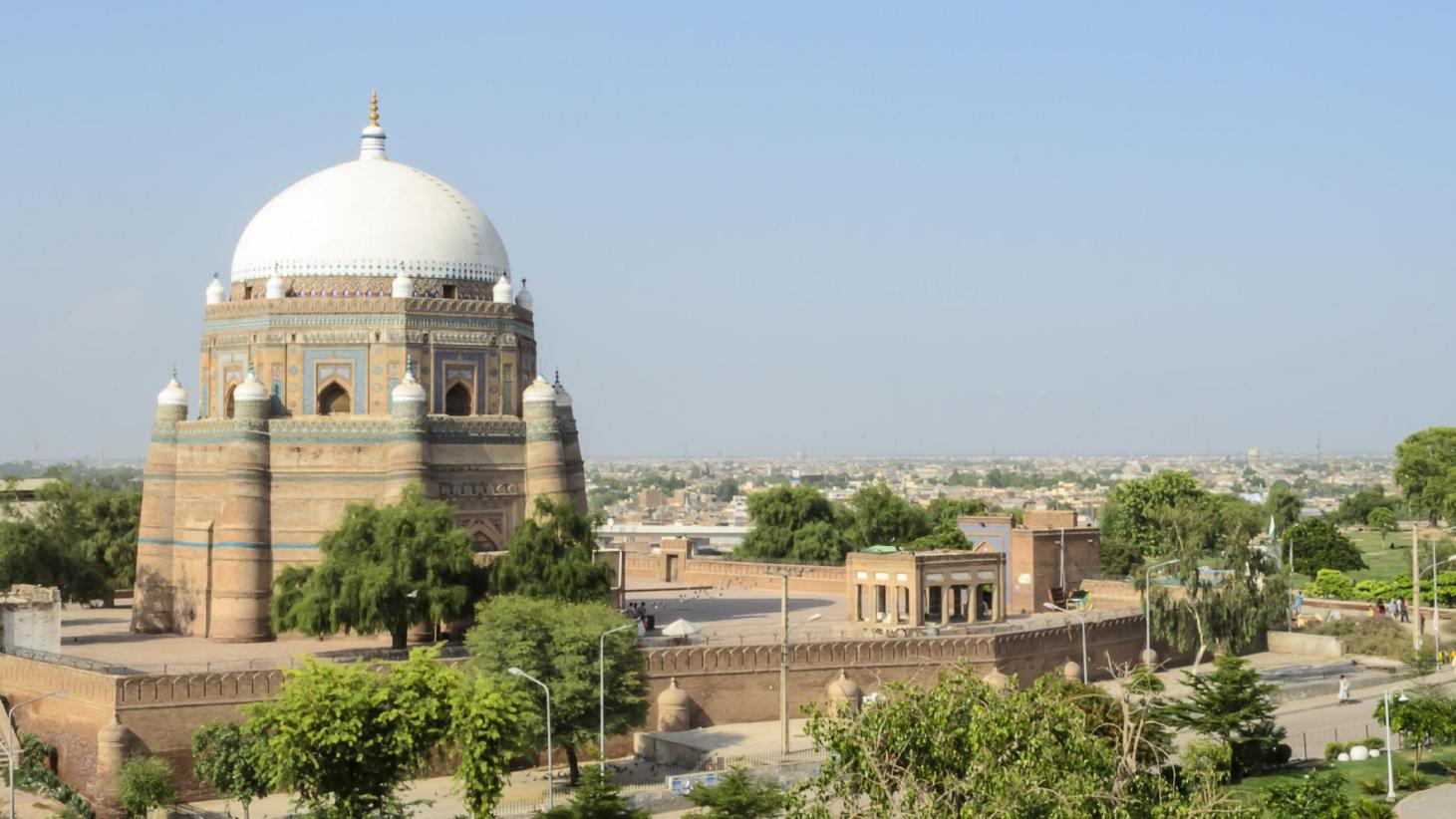
Multan (مُلتان ; [mʊltaːn] (About this sound listens) is a city in Punjab, Pakistan. Located on the banks of the Chenab River, Multan is Pakistan’s 7th largest city and is the major cultural and economic center of southern Punjab.
Multan’s history stretches deep into antiquity. The ancient city was the site of the renowned Multan Sun Temple and was besieged by Alexander the Great during the Malian Campaign. Multan was one of the most important trading centers of medieval Islamic India, and attracted a multitude of Sufi mystics in the 11th and 12th centuries, earning the city the nickname City of Saints. The city, along with the nearby city of Uch, is renowned for its large number of Sufi shrines dating from that era.
The origin of Multan’s name is unclear. Multan may derive its name from the Old Persian word mulastāna, meaning “frontier land,” or possibly from the Sanskrit word mūlasthāna (the root place), which itself may be derived from the Hindu deity worshiped at the Multan Sun Temple. Hukm Chand in the 19th century suggested that the city was named after an ancient Hindu tribe that was named Mul.
Early History
Multan in Punjab province of Pakistan is one of the oldest cities in South Asia, though its exact age has yet to be determined. It has seen a lot of warfare because of its location on a major invasion route between South and Central Asia. It is famous for its Sufi shrines.
The ancient name of Multan was Kashep Puri. The town was built by Raja Kashep. After Hurnakas his son Parhilaad succeeded the throne and the town was then named after him as Parhilaad Puri. The current name Multan was given due to Mali people who were defeated by Alexander the Great. “Once Keshap Puri (Multan) was capital of the Raja Hurnakas where Persian Kings had built the temple of the sun in which idol of the sun was laid. After the conquest of Multan, one Brahman had pointed out Muhammad bin Qasim about the treasure hidden beneath the fountain which was buried by Raja Jesubin. Muhammad bin Qasim found 330 chests of treasure containing 13300 maunds gold. The entire treasure was shifted from Debal to Basra on ships. After Islamic conquest, Arab rulers got handsome income from the temple of the sun. Whenever any Hindu Raja intended to conquer Multan the Arab rulers would threaten to destroy the temple. Buzrag bin Shahryar wrote the name of the temple as Aadith (sun). Al Beruni also wrote the same name”.
Multan was ruled by the various native empires before the invasion of Alexander the Great. It is said that when Alexander was fighting for the city, a poisoned arrow struck him, making him ill and eventually leading to his death. The exact place where Alexander was hit by the arrow can be seen in the old city premises. The noted Chinese traveler Huen Tsang visited Multan in 641.
Topography
Multan is located in Punjab, and covers an area of 227 square kilometres (88 sq mi). The nearest major cities are Dera Ghazi Khan and Bahawalpur. Multan is located in a bend created by five rivers of central Pakistan. The Sutlej River separates it from Bahawalpur and the Chenab River from Muzaffar Garh. The area around the city is a flat, alluvial plain that is used for citrus and mango farms.
Climate
Multan features an arid climate (Köppen climate classification BWh) with very hot summers and mild winters. The normal annual precipitation measures 186 millimetres (7.3 in).
Multan is known for having some of the hottest weather in Pakistan. The highest recorded temperature is approximately 52 °C (126 °F), and the lowest recorded temperature is approximately −1 °C (30 °F).
Cityscape
Multan’s urban typology is similar to other ancient cities in South Asia, such as Peshawar, Lahore, and Delhi – all of which were founded near a major river, and included an old walled city, as well as a royal citadel. Unlike those cities, Multan has lost its royal citadel, as it was largely destroyed by the British in 1848, which negatively impacted the urban fabric of the city.
Multan’s old neighborhood homes exemplify Muslim concerns regarding privacy, and defense against the city’s harsh climate. The urban morphology is characterized by small and private cul-de-sacs branching off of bazaars and larger arteries.
A distinct Multani style of architecture began taking root in the 14th century with the establishment of funerary monuments and is characterized by large brick walls reinforced by wooden anchors, with inward sloping roofs. Funerary architecture is also reflected in the city’s residential quarters, which borrow architectural and decorative elements from Multan’s mausolea.
Sources:
- Wikipedia